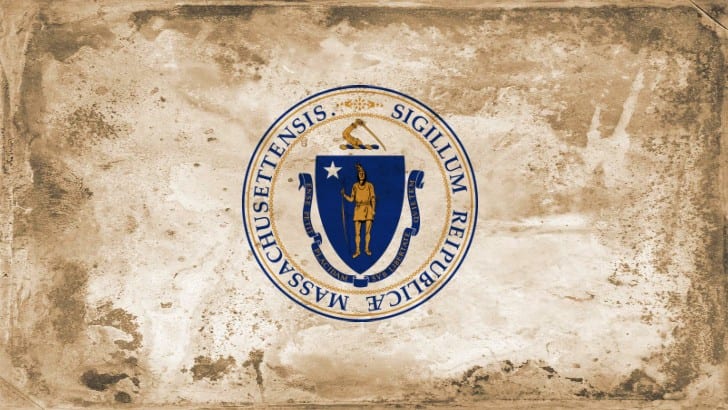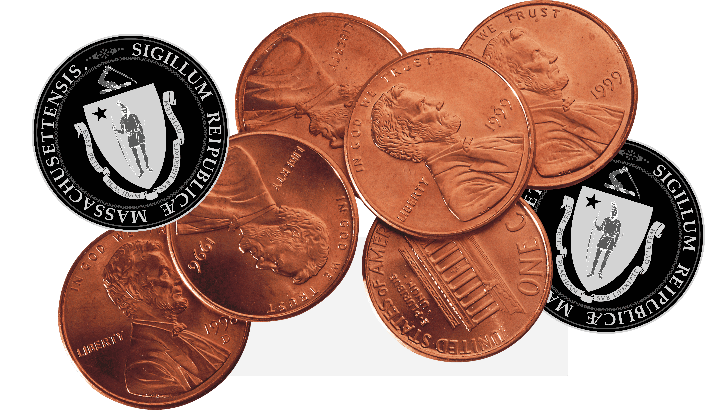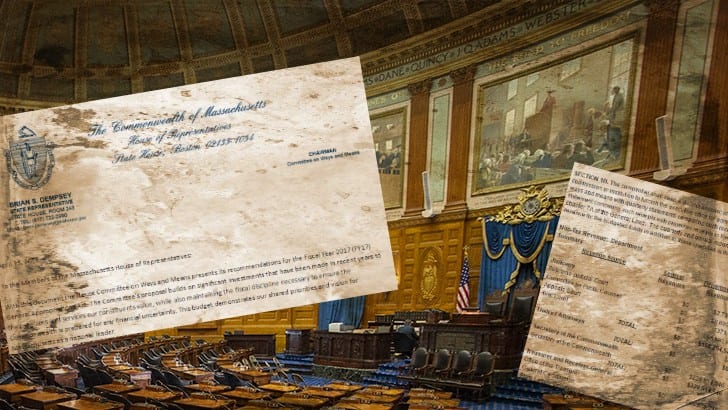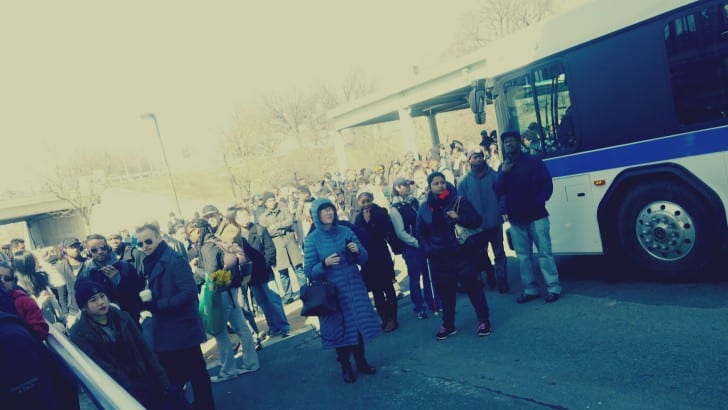
February 25, 2016
BY JASON PRAMAS @JASONPRAMAS
If you’re a working person, and you want to understand the annual Massachusetts state budget process, the best resource to consult is the Mass Budget and Policy Center (MBPC). It issues timely reports detailing every major budget proposal and wrapping up each final budget. And it keeps the interests of the Bay State’s working families front and center. All while providing much-needed historical perspective to numbers that are often presented ahistorically by state leadership and much of the press corps. Governor Charlie Baker’s most recent budget proposal was released in late January, with MBPC’s report, “Analyzing the Governor’s FY 2017 Budget,” following soon afterwards. Naturally, I’ll be using it as my source for most of this column.
Baker is said to be a nice guy. But he’s also a neoliberal’s neoliberal—handing out millions to giant multinational corporations like General Electric with one hand while cutting critical social spending with the other. So it’s no surprise that MBPC called his budget proposal—known as “House 2” in this second year of the Commonwealth’s two-year legislative cycle—an “austerity budget.” As has become depressingly typical in the United States of the early 21st century, tax increases on the rich and corporations are so far off the table that you have to go to Sweden to even hear the barest rumor of such an idea. Or at least you did until Raise Up Massachusetts started its constitutional amendment campaign to tax the rich and Bernie Sanders started getting serious airtime. The lack of progressive taxation at the state and federal levels leaves the Mass government continually starved for funds, and the annual budget process turns into an exercise somewhat akin to shuffling deck chairs on the Titanic.
The resulting budget proposal is therefore too harsh to break up into the kind of “good, bad” typology that may be appropriate for happier times. I’ll instead employ a more realistic categorization of the main budget lines into The Bad, The Mixed, and The Cops. The last category because one can’t help but notice that budget lines that fund police seem to increase with more regularity than other lines. I’m sure the police forces in question still never think they’re getting enough cash. But I respectfully disagree.
Although the list of budget lines below seems long, it is an extremely basic overview of the Baker proposal—provided here in the public interest. If you have some free time, and you really want to get a handle on the intricacies of the Mass state budget, I highly recommend reading the entire MBPC report. Or going directly to the source and wading through the full proposal.
For the quick and dirty summary, read on …
THE BAD
K-12 Education
To quote a special MBPC report on the FY 2017 K-12 education funding proposal: “The Commonwealth’s Chapter 70 education funding formula aims to ensure that every child in every district can receive an adequate baseline education. […] For FY 2017, the Governor proposes increasing Chapter 70 aid by $72.1 million over last year (1.6 percent).” This is the lowest increase since the 2008 recession. In addition, due to a new method of counting low-income students, the proposal ends up cutting or level-funding Chapter 70 aid for some communities—potentially causing local funding crises. One city under threat is Attleboro—which is slated to see only a .56 percent K-12 budget increase when municipal funds are included. School Finance Director Marc Furtado told the Sun Chronicle that amount is “not enough to cover increased costs in health insurance—never mind salaries, special education, maintenance and other items.” Closing the budget gap could require asking teachers to forego pay raises of 2-3 percent, making all students pay for busing and sports fees, and eliminating after-school programs in the middle schools. Other affected cities and towns will be even worse off.
Higher Education
The public higher education system in Massachusetts includes the University of Massachusetts system, the state university system, and the community college system—all of which have been woefully underfunded for over two decades. Resulting in huge increases in tuition and fees in that period. The governor’s FY 2017 budget proposal cuts $6.3 million (.5 percent) from current FY 2016 levels.
Environment and Recreation
The FY 2017 budget proposal cuts $14.9 million (7 percent) from current FY 2016 levels. This includes a $4.4 million cut (15 percent) from the Department of Environmental Protection, a $2.1 million cut (14.4 percent) from the Hazardous Waste Clean-Up program, and a $9.2 million cut from State Parks and Recreation. In that last case, the budget proposes that the Department of Conservation and Recreation retain $19.2 million that it collects from parking, camping, and entry feels—which lowers the cut to $6 million.
State Employee Health Insurance
The FY 2017 budget proposal tries to shift more state employee health costs onto state workers—increasing the share of health insurance premiums paid by employees hired before 2003 from 20 percent to 25 percent. Baker also wants to increase the share of retired state employees health premiums from 20 percent to 25 percent. The two moves would save $33 million. State retirees are definitely at risk with this plan, and long term current employees will take an effective pay cut.
Housing
The FY 2017 budget proposal calls for a $20.1 million increase (4.32 percent) from current FY 2016 levels. But actual FY 2016 is slated to be higher than planned, making it a $6 million cut (1.29 percent). Most of that cut falls upon the Emergency Assistance (EA) shelter program that serves over 4,000 homeless families with a $36.8 million increase over the FY 2016 budget, but $6 million less than the actual amount being spent on the program in this fiscal year.
Juvenile Justice
The FY 2017 budget proposal calls for a slight decrease in funding for juvenile justice programs run by the Department of Youth Services (DYS) below current FY 2016 levels. Most DYS programs are level-funded or decreased from last year.
Transitional Assistance
These programs help low-income individuals and families meet their basic needs and improve their quality of life when faced with an emergency. They used to be called welfare—rather than the current Orwellian appellation “transitional assistance.” The FY 2017 budget proposal calls for a decrease of $18.2 million in funding below current FY 2016 levels.
Other Human Services
These programs include supports for veterans, funding for the Soldiers’ Homes, and a few particular cross-agency initiatives. The FY 2017 budget proposal calls for level-funding veterans services (including the Soldiers’ Homes) with a $2.3 million decrease in funding for administration at the Soldiers’ Homes. The Massachusetts Emergency Food Assistance Program (MEFAP), a state supplement to federal funding for a network of food banks, is not being funded enough to keep up with inflation—while the demand at area food banks has been increasing.
Economic Development
These programs aim to strengthen the state’s workforce, support community investments, and stimulate economic activity. The FY 2017 budget proposes a decrease to economic development programs of $16.3 million (11 percent) from current FY 2016 levels.
Transportation
To directly quote the MBPC governor’s budget report: “In the Governor’s FY 2017 budget proposal, the most significant change for transportation is a $30.9 million reduction to the Massachusetts Transportation Trust Fund as compared to the current FY 2016 budget. This fund contributes to highways, transit, intercity rail, small airports, the Massachusetts Turnpike, and Motor Vehicle Registry, while also receiving funds from the Commonwealth Transportation Trust Fund, tolls, and federal transportation sources. The proposed FY 2017 amount of $327.7 is 8.6 percent below the current FY 2016 budget of $358.5 million, which itself had been reduced $6.5 million by the Governor’s January 9c cuts.”
THE MIXED
Early Education
These programs prepare children for K-12 education. The governor’s FY 2017 budget proposal calls for a small increase of .8 percent over this year, less than the expected rate of inflation.
MassHealth (Medicaid) and Health Reform
The governor’s budget calls for $15.41 billion for MassHealth programs, and $157.9 million for MassHealth administration and operations, an increase of 5 percent. The proposal does not ask for any cuts to member eligibility or benefits, but has a variety of strategies to control costs—including freezing rates for most providers (with the exception of behavioral health and substance abuse), and directing members to lower-cost health care. However, the proposal does not include insuring an increased number of members. Rather it seeks to maintain enrollment at 1.89 million members and hold MassHealth cost increases to 5 percent. This is problematic because, despite the relative success of the program, there are still too many Mass residents who don’t have health insurance.
Mental Health
The governor’s FY 2017 budget proposes an increase of $12.8 million (1.7 percent) over current FY 2016 levels, barely enough to cover inflation. But there is an increase in funding for residential behavioral health treatment for drug addicts.
Public Health
The governor’s FY 2017 budget proposal increases this line by $7.9 million (1.35 percent) over current FY2016 levels. The main increase is $9.3 million (7.1 percent) more for funding for substance abuse programs in the Department of Public Health. This still level-funds most of the state’s substance abuse programs, but increases funding for the Bureau of Substance Abuse by $9.1 million to support an increased level of prevention and treatment. Most other public health programs are level funded or cut.
Child Welfare
Given the recent scandals in the Department of Children and Families, the governor’s budget proposes a 5.1 percent increase over the current FY 2016 appropriated total for child welfare services. Mainly for more caseworkers, administration, and oversight. However, DCF spending estimates for the remainder of FY 2016 are expected to be $16.8 million more than current appropriations; so a supplemental budget appropriation may be needed this fiscal year.
Elder Services
The governor’s FY 2017 budget proposal calls for a slight increase to funding at $267.9 million. A major part of the plan for Elder Services is to combine some of the major accounts that provide funding for elder home care services—resulting in a slight decrease of about $770,000 for those services. Elder Protective Services—which investigates elder abuse and neglect—would see a $5 million increase. Grants to the Council on Aging—which provides grants to local council on aging centers that provide services to and advocates for elders—would see a decrease of $850,000.
Disability Services
These programs provide a range of services for people with disabilities. The governor’s FY 2017 budget proposal calls for a 2.7 increase from current FY 2016 levels. A number of the programs are being level-funded or cut, including services for people aging with developmental disabilities, people with autism spectrum disorders, and young adults with disabilities during their transition year from youth services upon turning 22.
Pensions
Here I’ll again quote the MBPC budget report: “In his FY 2017 budget proposal, the Governor recommends increasing the state’s contribution to the Pensions Reserves Investment Trust (PRIT) Fund by $226.1 million to a total of $2.20 billion. This represents an increase of 11.5 percent over the $1.97 billion contributed to the PRIT in FY 2016. This annual appropriation is in accordance with the 1988 state law that requires the Commonwealth to set aside money in the present in order to fund the future pension costs of public employees. The specific amounts to be contributed annually to the PRIT are stipulated in Massachusetts General Law, with a five year schedule included therein, running from FY 2012 through FY 2017.”
THE COPS
General Local Aid
These programs help cities and towns fund vital local services such as police and fire protection, parks, and public works. The FY 2017 budget proposes to increase Unrestricted General Government Aid (UGGA) by $42 million (4.3 percent) over current FY 2016 levels.
Prisons, Probation and Parole
The FY 2017 budget proposes to roughly level-fund prisons, probation, and parole services for $1.36 billion. Of special note, the Essex County, Bristol County, Plymouth County, and Norfolk County Sheriffs’ Departments would receive increases of 10 to 20 percent above FY 2016 levels.
Apparent Horizon is syndicated by the Boston Institute for Nonprofit Journalism. Jason Pramas is BINJ’s network director.
Copyright 2016 Jason Pramas. Licensed for use by the Boston Institute for Nonprofit Journalism and media outlets in its network.





